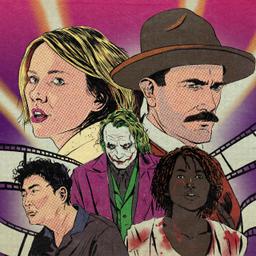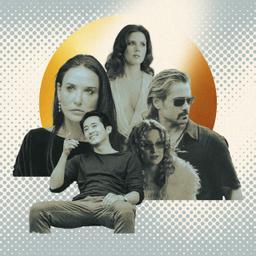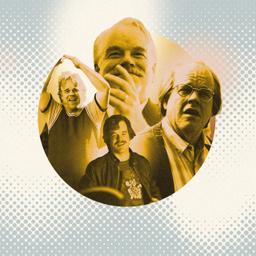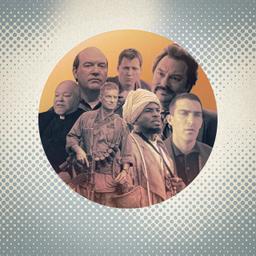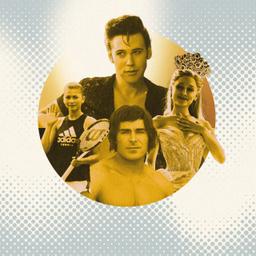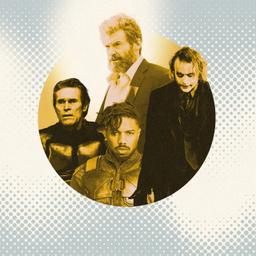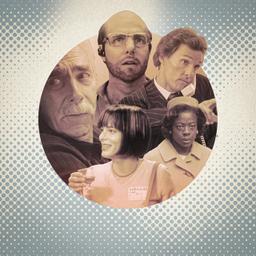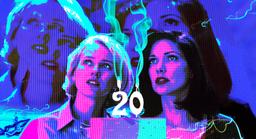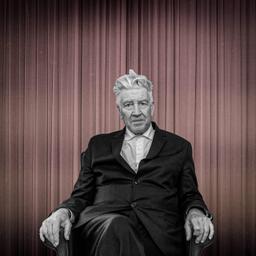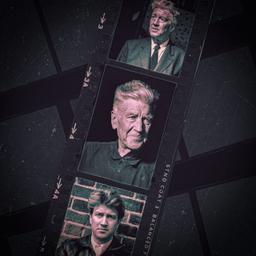Naomi Watts was ready to give up on her Hollywood dream. The acting jobs had dried up. “I was really down on my luck,” she says, remembering the late 1990s. “I was not getting hired. I was getting quite poor feedback, and it was tough. I was on the verge of being evicted.”
Around that time, Watts took a flight to New York to see a play with her mother and brother. As soon as she got into the city, her agent called: David Lynch was casting a television pilot and wanted to meet her about a part. The timing couldn’t have been worse. “I was like, ‘Oh my God,’” she says. “I’d just spent a lot of money on my air ticket and these theater tickets, and that’s a bunch of cash that I couldn’t just blow.”
The casting director, Johanna Ray, had to convince Watts to come back to Los Angeles. “She said, ‘Well, David has a very different way of casting. He just goes through a pile of photographs, and he pulls out about five of them and says, Let’s meet with those five. And if you are girl number three and he loves you, then that’s it. He’s done,’” Watts recalls. “So I was like, ‘Whoa, those are better odds!’”
Watts skipped the play. “I pretty much turned around right away and went straight to the meeting off the plane in my jeans and T-shirt,” she says. “No makeup or anything.”
Her conversation with Lynch went better than she expected. “You have to understand, I’d been going in and out of auditions where people would barely shake my hand, let alone make eye contact, and it would just be like, ‘Next,’” Watts says. “And I was shrinking further and further and feeling like, ‘How can I make this painless for everyone and get out of your way? I’m sure I’m not going to be this person for you.’ And so suddenly I’m in front of this fricking major filmmaker, and he’s got a smile on his face that’s so genuine and a spark in his eye that’s so beautiful. And he’s asking me questions about my life.”
The next day, Watts’s agent called again and said this: “Well, he loves you, but could you come back tomorrow and zhuzh your hair and makeup and maybe wear a dress?” By then, after a decade struggling to find a place in an industry infamous for unreasonable beauty standards, requests like that were neither insulting nor surprising. “Of course,” she says. “I went back and got a blow-dry and put on some makeup and a tighter-fitting dress.”
But during their second meeting, Lynch called out the ridiculousness of the glamor show. “I’m so sorry,” he told Watts. “I hate this. You’re perfect.” Not long after that, she was offered the lead: Betty Elms, a painfully wide-eyed aspiring actress whose optimism is an illusion.
“I couldn’t believe it,” Watts says.
But Lynch could. “I saw someone who had a beautiful soul,” he once told the L.A. Times, “an intelligence—possibilities for a lot of different roles, so it was a beautiful full package.” The director knew that Watts could play a character being crushed by “the city of dreams.” After all, she’d lived it.
Lynch was an expert at coaxing supernatural intensity out of his actors, but not even he could predict all the places Watts would go in Mulholland Drive. When ABC rejected the already-shot pilot in 1999 for being, well, too Lynchian, he reshaped it into a longer feature film. In the process, he created an additional character for Watts to play: Diane Selwyn, who looked just like Betty—after a long, slow trip through the show business meat grinder.
“I did have a clue that she was going to turn into Bad Betty because she was just too good,” Watts says. “And that’s how David rolls.”
Since Mulholland Drive was released 24 years ago, critics, film scholars, and cinephiles have been trying to unlock its box of mysteries. But if there’s a single consensus around a movie that can be interpreted in many different ways, it’s that Watts is spectacularly, historically great in it. “Lynch calls on Watts to do almost everything an actor can possibly do in a role,” film critic Manohla Dargis wrote in her L.A. Weekly review, “and she returns his confidence with an extraordinary performance.”
On the surface, Betty is a cliché: the kind of fresh-faced blond who moves to L.A. from a small town and gets horribly mistreated, and disposed of, by the ghouls running showbiz. “Initially, this is how I saw her,” says Dargis, who found Watts’s performance a little too obvious—at first. “It seemed a little big, borderline hyperbolic, almost. I knew something was going on because I was watching a David Lynch movie, but I wasn’t sure what was going on.”
Dargis left the Mulholland Drive screening at Cannes without fully understanding what had just happened. But she knew she loved it. “I kind of floated out the way you do when you’ve seen something really fucking amazing,” she says. “It was just so incredibly pleasurable and so sad.” She remembers needing a second viewing to figure the movie out. Not that that was a problem: Lynch’s work may sometimes feel inscrutable, but it rewards those patient and curious enough to stick with it.
“In a way, David’s making all of his films for himself,” Mulholland Drive cinematographer Peter Deming says. “He certainly wants an audience and wants people to see it, but I think it’s that recognition of people approving of his vision that is most appealing and rewarding for him.”
When filming started, Deming, too, was trying to make sense of Betty’s over-the-top positivity. When she arrives at her aunt Ruth’s vacant L.A. apartment and begins talking to the landlord, Coco, Betty is almost disturbingly bubbly. “We would finish the scene and we’d look at David like, ‘What’s going on here?’” Deming says. “And we decided there were some dark times ahead for Betty. We weren’t quite sure how that road would go.”
Then, after wrapping up a shot in the pilot, Deming heard Watts laughing. “I said, ‘What’s so funny?’” Deming recalls. “She goes, ‘This character is just so blinded to reality that she’s just so happy all the time.’”
Betty’s cheerful facade gradually crumbles away, and the range of Watts’s performance starts to poke through. While goofily running lines in the kitchen with Laura Harring’s mysterious Rita—who becomes her lover—Betty tricks the audience into believing that she’s not a good actor. The exchange, which Watts says “was just perfectly written” by Lynch, sets up one of the movie’s most memorable sequences: Betty’s audition.
Soon after getting ushered into a room with the producers, director, and star of a new movie, Betty gets pushed into the spotlight. By then, Watts was used to that exact scenario. “Having been in L.A. for a decade, very much living under the radar and doing probably up to five, 10 auditions a day, sometimes driving all across town,” she says, “I knew what all those beats were and what that scene meant and what David was looking for.”
The lightweight director gives Betty a piece of advice that he believes sounds profound: ”Don’t play it for real until it gets real.” With everything on the line, she overcomes her nerves and a greasy, over-the-hill scene partner and completely transforms. “It’s an actress playing an actress who is now acting and being brilliant,” Dargis says. “There are all these simultaneous layers that Naomi Watts, as a performer, has to shuffle through.”
On the third take, Deming remembers having an epiphany. “I was like, ‘Wait a minute, this is the same dialogue as the kitchen,’” he says. “But I couldn’t really recognize the scene at all. It was just so different. There was just this sort of sparkle in Naomi’s eye.”
When Watts heard that ABC dumped Mulholland Drive after the pilot was shot, she was already too jaded to be shocked. “I was like, ‘Oh, yeah, that’s just my luck,’” Watts says. “It’s the only David Lynch thing to never see the light of day.”
The project seemed destined to become buried treasure. Lynch was only able to unearth the footage when French company StudioCanal bought it and agreed to finance additional shoots to turn the project into a feature film. He wrote what became the movie’s third act one night during a meditation session. “Like a string of pearls, all the ideas came, all at once,” he said in an interview at the 2013 Beaune International Thriller Film Festival. “And there it was.”
Over a year after the pilot wrapped, Lynch called Watts. “I’ve written 20 more pages,” he told her. “Would you like to come and read them?” At that moment, Watts finally felt her luck changing.
The new script was full of material that would’ve caused the network censors to run out of red ink. “I had a sense there was going to be a whole darker level,” she says. “And then of course came Diane …”
When filming picked up again in October 2000, Deming could feel Watts ratcheting up her performance to play Betty’s Hollywood “after” photo, hardened and jilted and in the middle of an excruciatingly drawn-out mental breakdown. “After takes, you’d be like, ‘Wow, she’s really bringing it for this stuff,’” he says. “And I think that change in her character is what people saw as sort of incredible and, rightly so, shot her into space.”
Some of Watts’s memories from making the movie, she admits, are fuzzy. It just felt too good to be true. “I think I was so often out of my body through that whole experience with Mulholland Drive,” she says. “I just couldn’t believe I was even on a set, much less with David Lynch and with this incredible material and this role, and getting to come back to it the second time around.”
From the beginning, Watts appreciated Lynch’s quirks. “One of the great things I remember that makes him so truly unique: He would speak on his bullhorn, even if he was 2 feet from you,” she says. “And in the middle of the scene, he would yell something to you, and then you felt like he was there in the scene with you. It was like the kind of hand-holding you need. Not everyone could do that.”
There were times on set when Watts leaned on Lynch. He helped her make it through one of the movie’s most intense sequences. “I mean, the masturbation scene, it was very hard to do that,” she says. “I felt very emotional and dark and filled with shame. I remember going, ‘David, I can’t do this.’ Rather than cutting and going, ‘OK, let’s have a chat,’ he was like, ‘OK, Naomi, OK.’ And the cameras would keep rolling. But I was just so soothed by his voice. He was like, ‘OK, we can wait. Let’s see what happens.’ It’s that kind of support that really just anchors everyone.”
Late in Mulholland Drive, Diane attends a dinner party where she learns that her ex-girlfriend Camilla Rhodes, also played by Harring, will likely be getting married to Justin Theroux’s sleazy director, Adam Kesher. Diane doesn’t say a word, but Watts sells the character’s sadness and anger with shaking, pained facial expressions, and tears. When the cameras stopped rolling, the crew gave her a round of applause, and Lynch called out, “Beautiful work, Naomi.” The gesture has stuck with her since.
“That’s why,” Watts says, “it was easy to give things that were sometimes incredibly hard.”
When Mulholland Drive came out on October 12, 2001, people who saw it, even the experts, tended to ask the same thing: What does it all mean? But Lynch had no interest in answering that question.
“I think that was always David’s intention,” Watts says. “It’s for you to make up and take away what you want. I would try to trick him into giving me absolute answers, and he would find his way to very gently and not with torture—or if it was torture, it was with humor—not do it. He just wanted to keep that mystery.”
The thing was, the incomprehensibility of Mulholland Drive seemed to make it better. “The less sense it makes,” Roger Ebert wrote in his four-star review, “the more we can’t stop watching it.”
Dargis says that her rave in L.A. Weekly led to hate mail. “To me, it’s a very interesting kind of insight into how some moviegoers are,” she says. “They were angry that they hadn’t gotten it.”
But some did. Or at least they tried to. And that’s a testament to the man who made the movie. “Lynch is not an obvious filmmaker,” Dargis adds. “And I think that’s part of what’s remarkable about his career. I mean, he never became as popular as Steven Spielberg, but he became much more popular than you’d think someone who had directed Eraserhead would’ve.”
Mulholland Drive made a modest $20.1 million at the box office worldwide and almost instantly became a cult classic. Lynch was nominated for an Oscar. And over time, love for the film has only grown. The New York Times, where Dargis is now the chief film critic, recently named it the second-best movie of the 21st century so far.
“I keep hearing, this many decades on, how it stayed with people, and I think it’s because of those things that really get under your skin,” Watts says. “There’s some real hard truths in there.”
Inexcusably, the Academy ignored Watts’s performance. But the industry didn’t. “That role of Betty is a gift,” Dargis says. “That is a rare thing. And I am sure that every performer, if you have one role like that, that makes your career.”
Since Mulholland Drive, Watts has starred in both blockbusters (The Ring, King Kong) and critical favorites (21 Grams, Eastern Promises, The Impossible). She also reteamed with Lynch on his horror web series Rabbits and Twin Peaks: The Return.
The last time Watts and Lynch met before the director’s death in January, they chatted about their first collaboration. There were no revelations, only fond memories. “We were still going, ‘Wow, that really was a special one,’” Watts says.
There is some irony in the fact that her performance as two showbiz archetypes in a film about the soullessness of Hollywood helped make Watts a movie star. But Lynch probably wouldn’t have seen it that way. To him, those two things were never in opposition. “David and his examination of the truth, it’s balanced,” Watts says. “Some of it is hard and ugly, and some of it is beautiful and magical.”
